The Kimball Art Center is one of Park City’s most recognizable institutions. Established in 1976, the Center offers incredible art exhibits, shares classes and workshops, and hosts the annual Kimball Arts Festival. Until very recently, the Center was headed by executive director Robin Marrouche, who has since altered her role to become a member of the board of directors and seek a new, permanent home for a blossoming bastion of the arts that has outgrown its Main Street location. Robin sat down with us to share her story and fascinating insights into the past, present, and future of the Kimball Art Center.

Tell us a little bit about yourself. What is the Robin Marrouche story?
My story has a switchback, non-linear path to Utah, and to the arts in general. I’m Canadian, and graduated from McGill University in Montreal as a Poli Sci/History major hell-bent on working in the Foreign Service. My college roommate majored in Arts Administration and I used to tease her about the odds of finding employment, gainful or otherwise. She clearly got the last laugh, since I’m the one who ended up in the field of art.
I also met and married my husband in Park City. He was just visiting for a conference when I snapped him up, and together we are raising our 4-year-old daughter in this wonderful, four-season resort town. She happens to be the only American in our household. Fun fact.
Let’s jump right in on the issue that has caused your name to appear most often in recent history: the construction of a new permanent home for Kimball Art Center (KAC). Not long ago, you decided to step down as executive director for the center to focus on the search for a permanent home. How is the search going?
Our search led us to the most exciting outcome imaginable. We’ve just entered into a partnership agreement with the City and Sundance Institute to create Park City’s first-ever Arts and Culture District.
KAC will be a part of conceptualizing and building the next place for the Park City community and visitors to gather to experience the transformative power of the arts. It will be in Bonanza Park, a mile from Main St—still in the heart of town, but in a historically underutilized area that is ripe for revitalization. It’s located at one of the City’s most prominent entryways, core to the transit and trail system, with parking, in close proximity to three schools, including the public high school.
It’s a chance to be part of something uniquely special. The fact that arts and culture gets to be a driver of social change is amazing, and so much larger than our original expansion plan. Pressing growth issues can be addressed through weaving arts & culture priorities alongside responsible environmental building, efficient energy use, and creating centrally-accessible community gathering spaces. Our City leaders are demonstrating tremendous vision with this bold move, and we each get to participate in something much bigger than ourselves in order to have the greatest collective impact.
The children of our late Founder Bill Kimball say he would be immensely proud of this development. Its future potential is dizzying, and, frankly, a dream to be a part of. As Dr. Seuss taught us in The Lorax: “It’s not about what it is…it’s about what it can become.” It gives us butterflies to imagine all of the possibilities ahead.
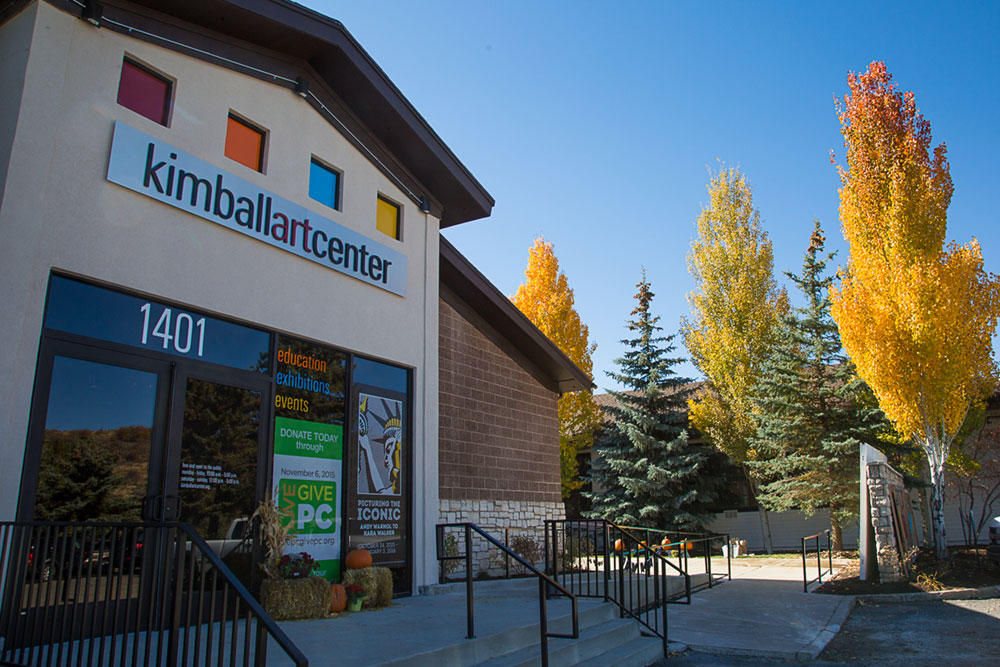
The saga of the Kimball Art Center’s new home has stretched on for a while now. Could you tell us more about the experience? What has it been like to be at the center of one of Park City’s most notable recent development struggles?
Saga is a fairly apt description. It felt like an epic journey at times, a la Homer’s Odyssey. But, like so often in life, it all turned out for the best. It truly happened for a reason. And this is such an exciting reason that we’d do it all over again if it meant arriving at the same end point.
Our challenges were very public—which in turn led to open dialogue, resourceful thinking and creative brainstorming with disparate groups who may never have convened otherwise. Our fairy tale ending will be the realization of a new and dynamic arts district for our whole community. The positive aspects of the district will be far greater for Park City in the end. That is an extremely rewarding conclusion, and worth it 100 percent.
Going back to the time before the current quest for a permanent home, how did you come to be involved with Kimball Art Center?
It was one of those happenstance conversations that completely changed the course of a life. A woman from my book club, Laurie Eastwood, was KAC’s Board Chair at the time. She and her husband are close friends and extremely committed to community service. They jointly encouraged me to throw my hat in. I pointed out that I was in tech, and that their suggestion was slightly crazy, but they assured me my skillset was a perfect fit at that point in KAC’s evolution (circa 2008). I’m incredibly grateful to them, because my experience at KAC has been immensely enriching, humbling, and rewarding on every level.
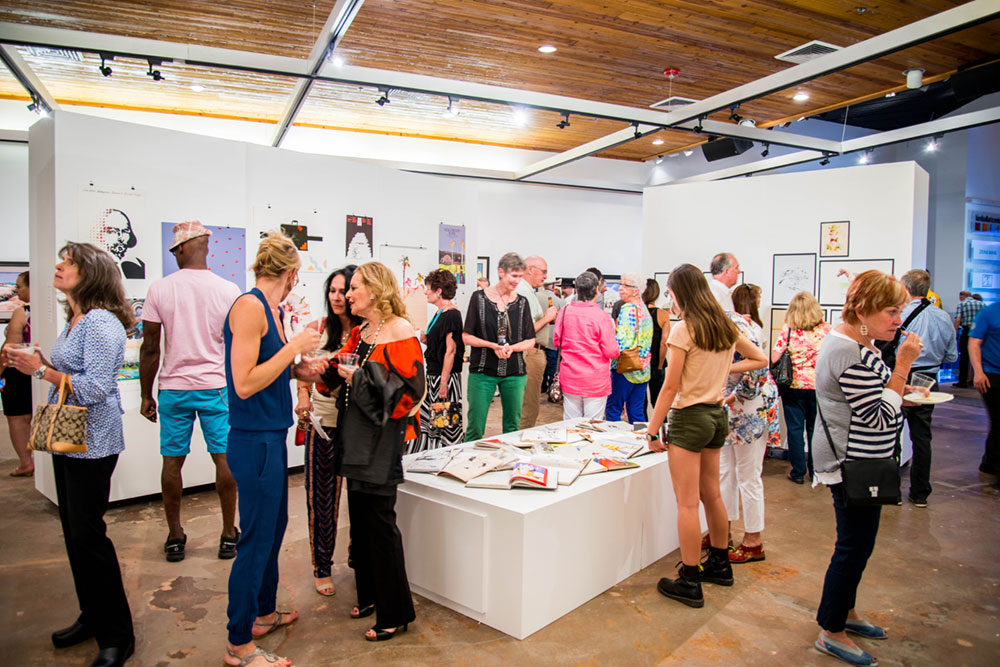
Over all this time, what was your involvement like? What projects were you involved in? How did your work grow and change?
KAC’s staff and budget were fairly small in size when I started, so each of us was intimately involved in its growth and change. My title could have been Chief Cook and Bottle Washer, but we all put our backs into it to get things done. Everyone had to “do windows” as it were. The good news is that we collectively doubled the budget, more than tripled attendance, outgrew the space with increased programming of events and classes by a large multiple, experimented with an artist in residency program, pulled off some spectacular exhibits, and generally made major steps forward to cement KAC’s future potential. The interim move to a temporary location has also taught us a great deal about what we want and need in a permanent space; and that is invaluable information.
What has been your favorite development in Kimball since you started working with the Center?
When we ran out of space at our original site, we began to innovate to bring art to constituents of other non-profit partners, such as The Park City Education Foundation (PCEF) and National Ability Center (NAC). Our Elementary Visual Arts program with the PCEF brings art back into the elementary schools, and, at NAC, we’ve brought art to wounded vets, to adults and children of varying levels of ability and to those on the autism spectrum. The satisfaction of seeing our part in bringing hope, distraction, and inspiration to others cannot be described in words. It radiates to your core as you watch it unfold.
What is your favorite part of Kimball Art Center?
It warms my heart to know the Kimball staff spend their time adding color, vital amenities, and a vibrant sense of richness to our community – which is why it’s such a special place. I always say that we are selling joy. With free admission, that’s both an honor and a privilege!
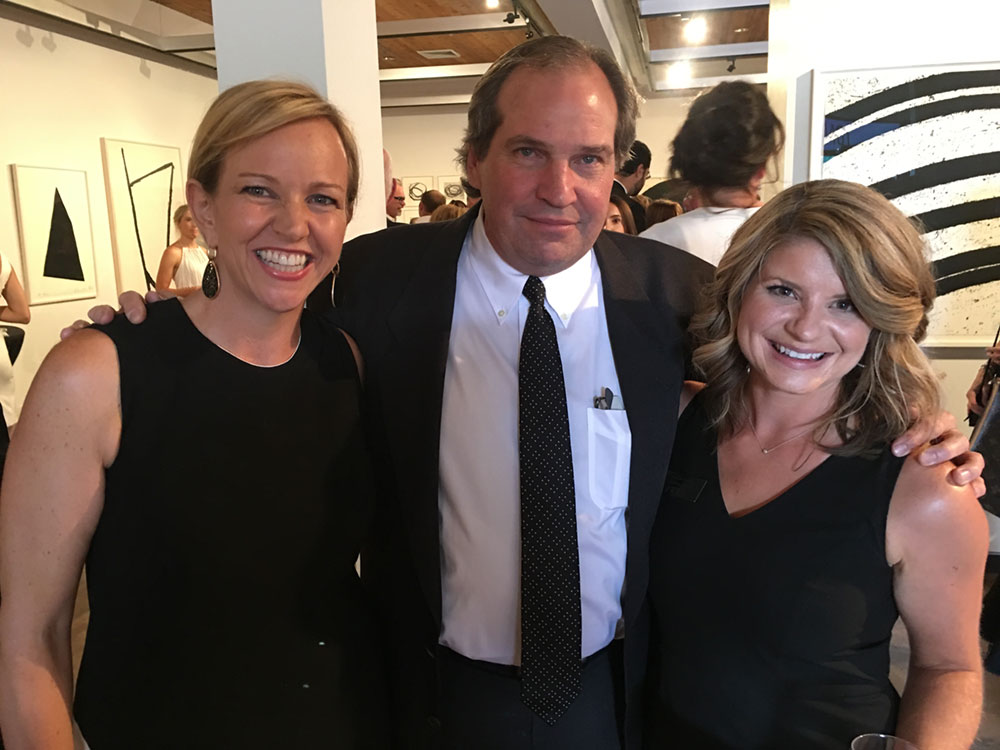
Kimball Art Festival is a big deal in Park City. It has been going on for about half a century at this point. What does the Festival look like now compared to its inception? Where do you see it going from here?
The Festival has a colorful past as the longest running arts festivals in the American West. It started with a creative group of artist hippies who would remove doors from the hinges of local establishments to hang their macramé creations, and would sit on milk crates to sell their wares up and down Main St. At one point, the Salt Lake Tribune declared that one third of the population of the State of Utah was expected to visit the Arts Fest over a weekend. (We still have a copy of that front page.) It became more successful—and bigger—than they were prepared to deal with, so they handed it over to the Kimball Art Center to run and professionally manage.
Beloved local leader and visionary Tina Lewis was the Arts Festival’s first official Director, and it is now a juried festival—nationally ranked and highly competitive. Our goal is to continue to grow its quality, prestige, and offerings. We’ve been listed in the top 10 in the nation, but have our sights set on a top 3 ranking. We are immensely proud to bring such a first-class festival to town each summer for visitors and residents alike to enjoy.
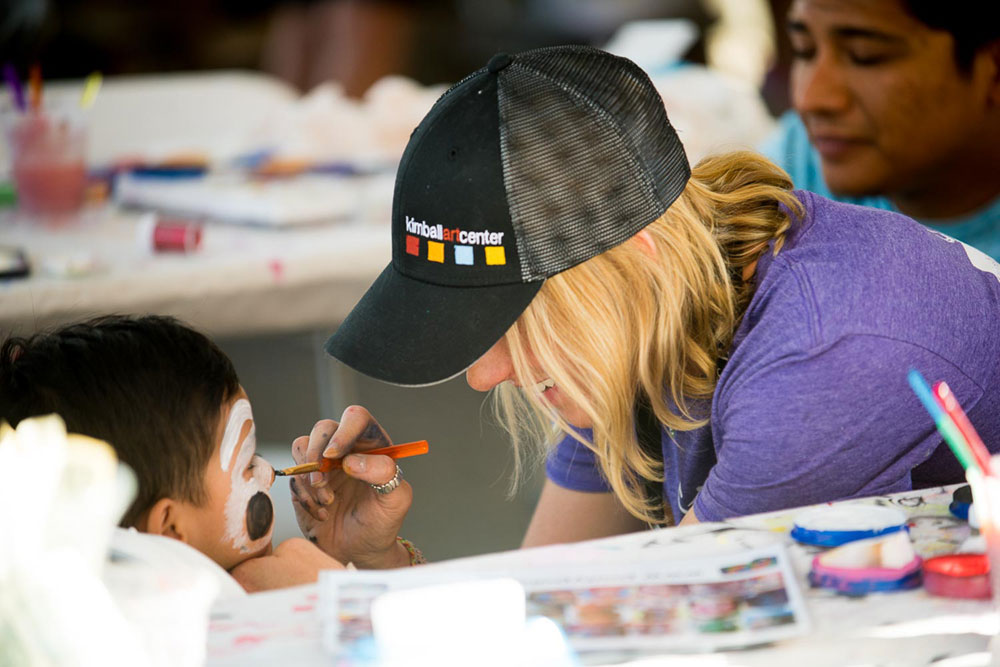
What is the process for putting together the exhibits at Kimball Art Center? There have been so many over the years, how do you decide what to bring to the Center?
There is an Exhibitions Committee made up of KAC Board and staff who choose the exhibits. Being a smaller, more agile center, and not a big, slow moving organization, we are lucky that we get to experiment with different and shorter run exhibits to keep people’s interest. We can offer tested favorites, but also showcase new concepts. Not every exhibit will appeal to every taste, but it is sure fun to try. And, you will eventually appeal to nearly everyone’s interests through diverse offerings over time.
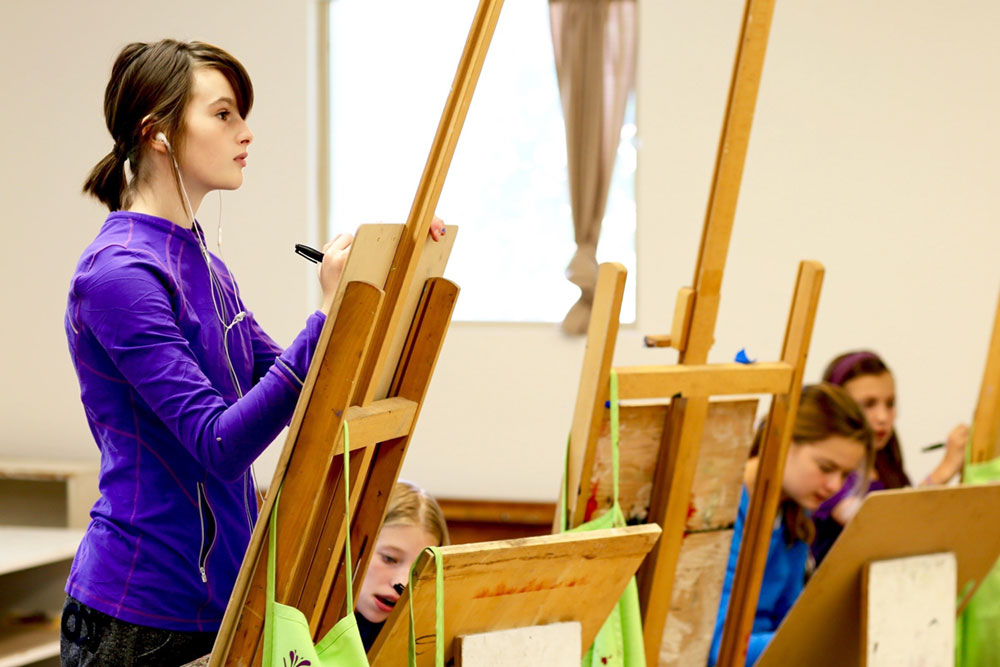
Kimball Art Center offers a lot of instructional and exploratory content for budding artists. How would you encourage those who want to become artists? What advice would you offer to those just beginning to explore artistic expression?
I strongly encourage budding talent to trust their voice and follow their instincts, in spite of what others think. A great example is Nathan Sawaya, the LEGO artist, whose exhibit, “The Art of the Brick,” we hosted at KAC (twice) to record attendance. He was an attorney in NYC who walked away from a career that didn’t make him happy to make art from a favorite childhood toy. He now tours the globe, bringing his beloved work to unforeseen crowds; and kids learn about art through a medium they can relate to. He’s brilliant, but I’m sure he got a lot of negative, unsolicited “advice” along the way. Thank goodness he didn’t listen to any of it and just followed his bliss and his gut.
In addition to your involvement with Kimball Art Center, I’m sure you are an aficionado in your personal time. What are your own artistic tastes? Mediums, movements, artists?
I’m a huge fan of contemporary art and of abstract expressionism. I was extremely fortunate to live all over the world when I was young, and blessed to be exposed to diverse art forms—though recall visiting several famous museums under massive protest as a kid! I took art for granted, and never truly understood all the fuss until I stumbled upon the Rothko Room at Tate Modern in London when I was old enough to appreciate it. It took my breath away and moved me to tears. I could not understand its hold over me and just sobbed. I suppose I was feeling it on a cellular and visceral level. That’s when you know great art truly has you in its grip. It apparently never lets go. I cried again in the Rothko Chapel in Houston 2 years ago—quite joyfully.
Architecture is another great personal passion. I can’t get enough of it. Now, as a newly minted KAC board member, I get to focus on it with the new building. It is an unbelievable honor.
My Favorite Artists? Yikes, that’s hard. It’s like trying to name a favorite song. Some of my very favorites include:
Richard Serra, Ellsworth Kelly, Mark Rothko, Robert Motherwell, Cy Twombly, Yves Klein, Barnett Newman, R. Nelson Parrish, and Park City’s very own Susan Swartz.
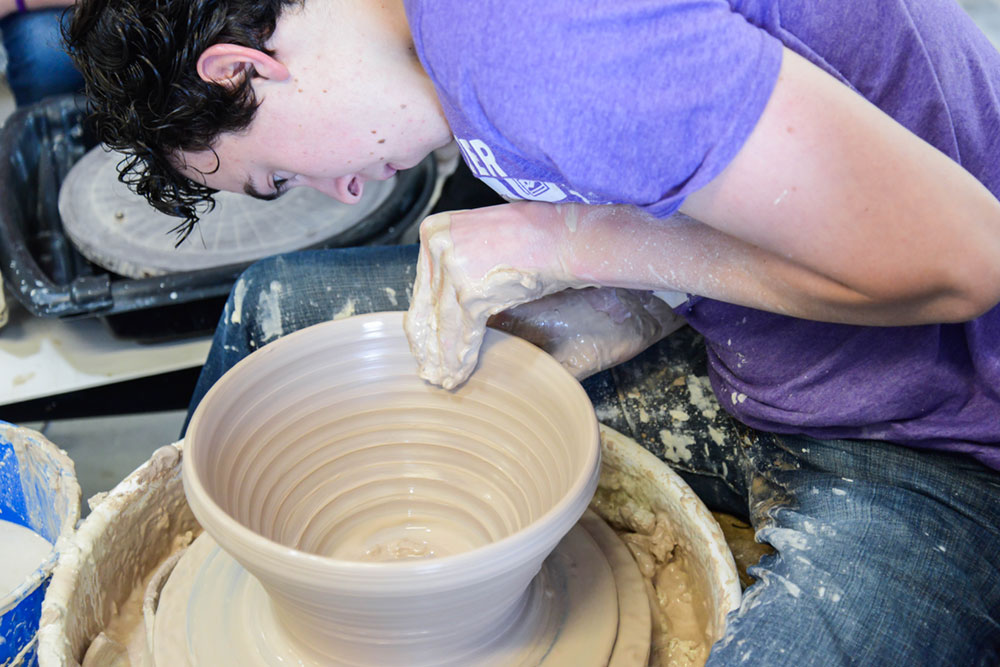
Do you enjoy creating art of your own? How do you express yourself?
I can’t draw a stick figure; but I have great respect for the creative process, and for visual artists altogether. I express myself primarily through verbal communication. Ha! However, I plan to take more art classes at KAC with my soon-to-be 5-year-old. She is convinced that art is a gift from the universe, and that artists are the rock stars of humanity. She has created so many mini masterpieces that our floors look like we live with Jackson Pollock. She’s definitely getting a head start on her 10,000 hours.
Where did you hail from originally and how did you come to Park City?
I’m originally from London, Ontario. A dear high school friend and business author, Angie McArthur, moved here in the early 90s. I was a bridesmaid at her wedding in 1998 at Stag Lodge. It was held under a wedding arbor where the iconic Deer Valley “Last Chance” and “Success” runs meet. There were abundant wildflowers, a cloudless blue sky, birds flying overhead. It was a perfect July Park City day—and if you have experienced summer in Park City you know EXACTLY what I am talking about. I was smitten, and contacted an immigration attorney shortly thereafter. The rest, as they say, is history.
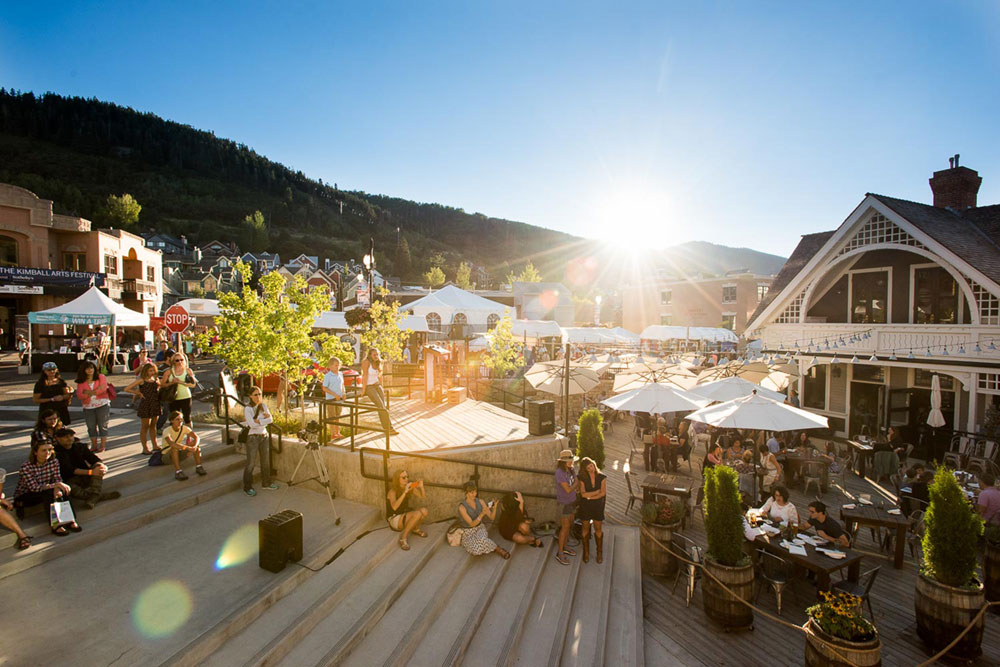
What do you like most about Park City? What is its best feature?
Park City is a town with an authentic warmth and charm, chock full of total characters. Its best feature, though, is its gorgeous landscape of seemingly infinite natural abundance. You can never possibly tire of it. I still pull over sometimes when I am driving and marvel at its postcard-perfect beauty and think, “Oh my God, I can’t believe I get to live here.” Cue the Talking Heads song line “HOW DID I GET HERE?” ….
There’s a local restaurant—Red Rock Brewing Co.—whose wait staff t-shirts say, “my life is your vacation.” It’s cheeky, but sort of true.
Is there anything else you would like to share with our readers?
If you’re in town this weekend, be sure and visit The Kimball Art Center on Kearns. We have a free Art Talk on Richard Serra’s work currently on display in our Main Gallery with famed art collector Jordan Schnitzer at 6pm on Thurs Aug 3. And, don’t miss the Park City Kimball Arts Festival on Main St. Aug 4 – 6. All proceeds go toward providing free admission to the KAC all year long. Visit our website for details.
Photos courtesy of Kimball Art Center and Robin Marrouche

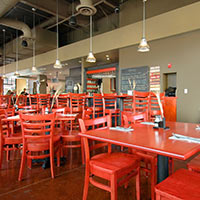

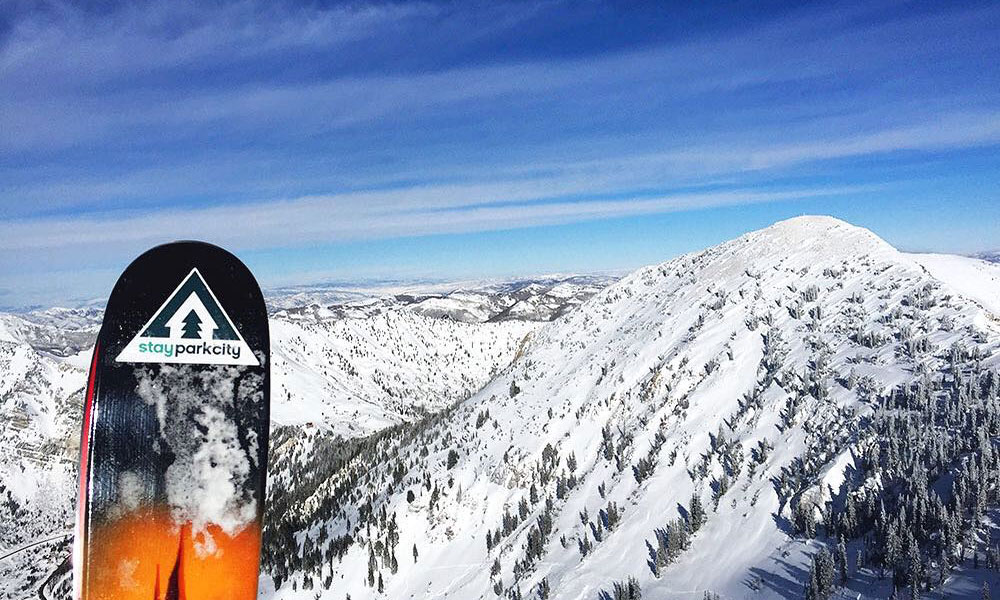
Leave a Reply